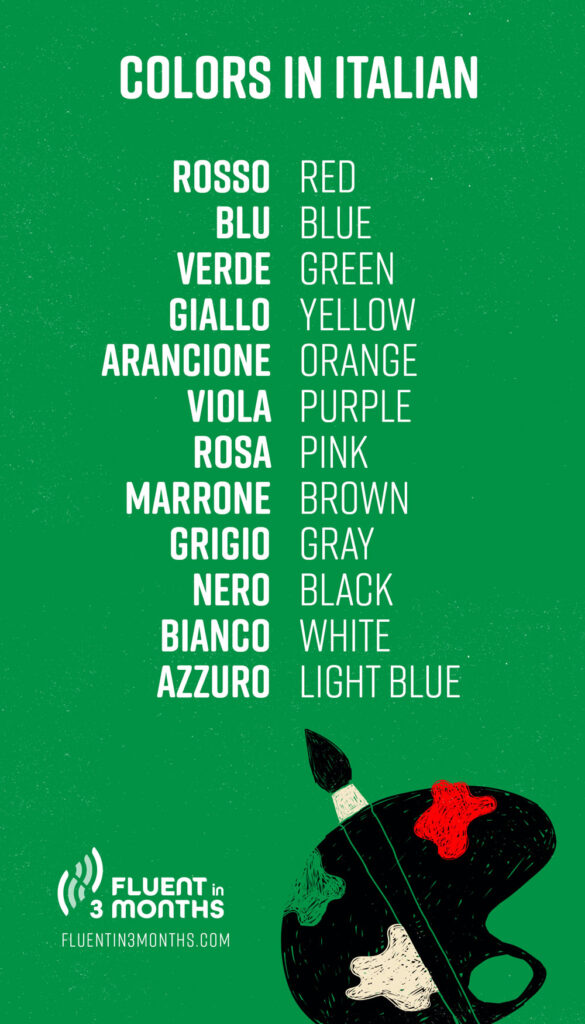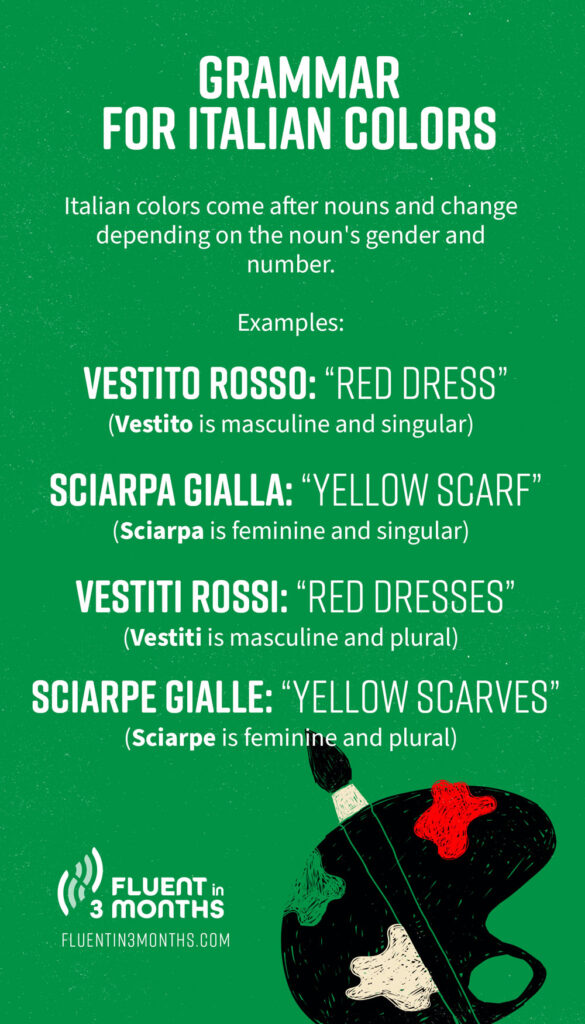Be taught colours in Italian to start out describing nouns, order gelato of all colours in Italy, store for garments, and extra! In Italian, colours must agree with each the gender and the variety of the noun they’re describing. Which means that their endings can change relying on the context. We’ll clarify why and the way, proper after we cowl an important colours in Italian.
Colours in Italian: I Colori
Let’s begin with the fundamentals. Listed here are the commonest colours in Italian:

Learn how to Use Italian Colours in a Sentence
In Italian, colours come after the noun. For instance, the proper translation of “black jacket” could be giacca nera and not nera giacca. Discover how we stated nera as a substitute of nero? That’s as a result of Italian colours have to agree with the gender of the noun.
Listed here are another examples:
- Vestito rosso: “Pink costume” (Vestito is masculine)
- Sciarpa gialla: “Yellow scarf” (Sciarpa is female)
To make Italian nouns plural, we have to change the ending. Nouns ending with -o and -e become -i, and nouns ending with -a into -e. Colours additionally have to adapt when representing plural nouns.
Now, let’s check out the examples above and switch them into plural.
- Vestiti rossi: “Pink clothes”
- Sciarpe gialle: “Yellow scarves”

This is applicable to nearly all colours, with a number of exceptions. Colours rosa, blu and viola are at all times written the identical approach, regardless of the gender or the variety of the noun.
- Libri rosa: “Pink books” (Though libri is the plural of libro, rosa stays the identical.)
- Porte viola: “Purple doorways” (Porte is the plural type of porta, a female noun. Viola stays the identical.)
- Sedie blu: “Blue chair” (Sedie is the plural of sedia.)
We must also take note of the plural type of bianco, the colour “white.” As an alternative of bianci or biance, we are saying bianchi for masculine plural and bianche for female plural.
To make use of colours in a sentence, you possibly can mix them with the adjectives as we did above, or with the verb essere, “to be.”
- Il gatto grigio ha fame: “The gray cat is hungry.” (Gatto is a masculine phrase so we used the masculine article il and grigio in its masculine kind.)
- La mia amica vive nella casa rosa: “My good friend lives within the pink home.” (Casa is female so we used the female article la.)
Fast recap of the verb essere, which we’ll use within the following sentences:
Learn how to Say Darkish and Mild in Italian
In Italian, darkish is scuro and lightweight is chiaro. When used after the colour, they provide us a clearer image of what the article seems like.
- Rosso scuro: “Darkish crimson”
- Il mio vestito è rosso scuro: “My costume is darkish crimson.”
- Viola chiaro: “Mild purple”
- La tua camicia è viola chiaro: “Your shirt is mild purple.”
Studying Italian Will Now Be Extra Colourful!
When you grasp the colours, think about shifting on to different widespread Italian phrases, reminiscent of garments, meals, or animals. This manner, you’ll follow colours whereas studying new phrases.

